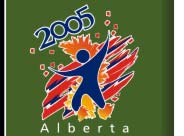|
 In the 1960s and 1970s, the destruction of traditional
Aboriginal culture, which had accelerated over the years through
government’s various policies of assimilation, was becoming a
serious threat. A "healing movement" took place as Aboriginal
peoples began to turn to their communities and to the
traditional teachings of their Elders for support. At the same
time, this turbulent era saw a large number of Aboriginal
Peoples relocating from rural lands and reserves to urban
locations. Many placed their trust in the hustle and bustle of
the city, hoping their new lifestyle would improve their chances
of obtaining an education and secure better employment
opportunities.
In the 1960s and 1970s, the destruction of traditional
Aboriginal culture, which had accelerated over the years through
government’s various policies of assimilation, was becoming a
serious threat. A "healing movement" took place as Aboriginal
peoples began to turn to their communities and to the
traditional teachings of their Elders for support. At the same
time, this turbulent era saw a large number of Aboriginal
Peoples relocating from rural lands and reserves to urban
locations. Many placed their trust in the hustle and bustle of
the city, hoping their new lifestyle would improve their chances
of obtaining an education and secure better employment
opportunities.
For many Aboriginal Peoples, the move to the city would be
their first time to venture into the outside world from the
small prairie communities where they had been raised. Life in
the city proved to be very different from life on the land, and
brought with it life-changing goals and challenges, from
learning to speak English to dealing with culture-shock.
Moreover, urban Aboriginal Peoples struggled daily with
discrimination or outright racism, battling twice as hard to
earn the rights that non-Aboriginal peoples enjoyed on a
constant basis. The cumulative effects of this often-unwelcoming
and discriminatory environment left some people desperate and
hopeless. Lacking the support of their families and communities,
many turned to alcohol or drugs, which had already threatened to
destroy their cultures in the past. Unfortunately, this era gave
rise to many of the misconceptions that exist about urban
Aboriginal Peoples today.
 It is true that, overall, Canada’s Aboriginal Peoples
experience higher levels of poverty as compared to the larger
Canadian population. The reasons for these discrepancies are
myriad and complex. These issues are rooted in social-economic
status, education levels, geography, cultural identity, the
levels of social inclusion and integration, community structure,
and lack of infrastructure for health and wellness. Yet, the
misconceptions that prevail in society today are surface-deep
and are not supported by statistics. The 2001 Census indicates
that 49 per cent of Canada’s Aboriginal population resides in
urban areas. In Alberta, 72.8 per cent of off-reserve Aboriginal Peoples have either
high-school or post-secondary education, and 58 per cent were
employed in 2004 (as found by the Aboriginal Labour Force
Survey.)
1
The urban Aboriginal Peoples who are in need of healing
need the support of their communities, Aboriginal and
non-Aboriginal alike, not the discrimination or racism that they
are too often dealt.
It is true that, overall, Canada’s Aboriginal Peoples
experience higher levels of poverty as compared to the larger
Canadian population. The reasons for these discrepancies are
myriad and complex. These issues are rooted in social-economic
status, education levels, geography, cultural identity, the
levels of social inclusion and integration, community structure,
and lack of infrastructure for health and wellness. Yet, the
misconceptions that prevail in society today are surface-deep
and are not supported by statistics. The 2001 Census indicates
that 49 per cent of Canada’s Aboriginal population resides in
urban areas. In Alberta, 72.8 per cent of off-reserve Aboriginal Peoples have either
high-school or post-secondary education, and 58 per cent were
employed in 2004 (as found by the Aboriginal Labour Force
Survey.)
1
The urban Aboriginal Peoples who are in need of healing
need the support of their communities, Aboriginal and
non-Aboriginal alike, not the discrimination or racism that they
are too often dealt.
Another issue that many Aboriginal Peoples struggle with is
the common notion that they must either embrace assimilation
totally or remain tied to traditional life.
2
Such a decision
should not be expected of Aboriginal Peoples, just as it should
not be expected of any other culture existing in Alberta today.
Urban Aboriginal Peoples have chosen to reside in the city. In
the same way, they may choose to retain their ties to their
traditional languages, rituals, and spiritual beliefs. However,
such decisions are ultimately personal and vary from individual
to individual.
For those who live in urban locations but still wish to
maintain connected to their traditional past, a number of
resources are available. A strong network of Native Friendship
Centres was established to provide community support to
Aboriginal Peoples in often-isolating urban settings. The first
centre in Alberta opened its doors in Edmonton, in 1962.
3
Since then, the number of Native Friendship Centres has grown to over
20. They are scattered across towns and cities such as Calgary,
Red Deer, Hinton, Lac La Biche, Cold Lake, and Grande Prairie.
The centres provide urban Aboriginal Peoples with resources for
healing and growth. Most importantly, they provide a place for
people to share in their struggles and joys with a supportive
group of community members and Elders. |
 Heritage Community Foundation Presents
Heritage Community Foundation Presents





















